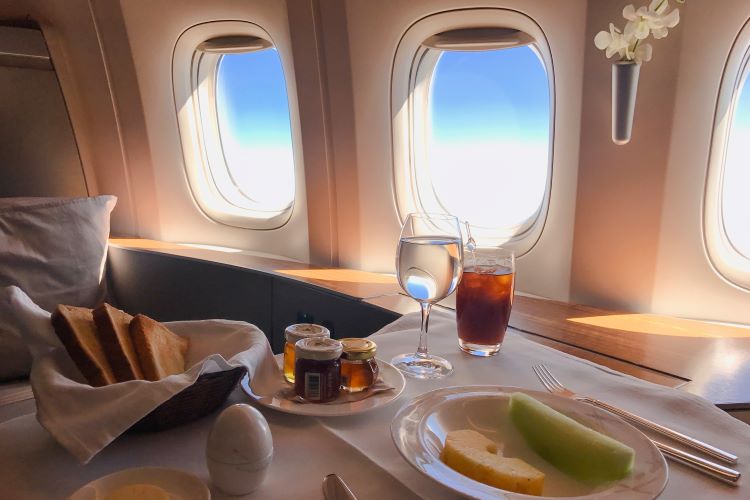New report reveals "Sensehacking" is the future of inflight passenger wellbeing

"Sensehacking" in aviation explores how passenger wellbeing can be improved — by appealing to every sense
A new report reveals how “sensehacking” — intelligent stimulation of passenger senses — could optimise inflight wellbeing — from minimising noise levels to more appropriate lighting, and even accompanying food with music to bring out flavour.
These new innovative measures to “sensehack” the passenger experience help airlines ensure travellers are able to relieve the stress and anxiety of flying.
“Sensehacking: Passenger Wellbeing in the Air” by Professor Charles Spence of the Crossmodal Research Laboratory at the University of Oxford points out that the concept of comfort is a “multi-sensory construct,” influenced by a wide range of factors, including everything from noise to vibration, ergonomics, legroom (or lack of it), and even the characteristics of the passengers themselves.
In an April 13 press release, Professor Spence said, “The airline and airport industries clearly understand the need for stress-soothing service strategies and that the multisensory atmosphere while flying is not conducive to promoting inflight passenger wellbeing. However, despite this understanding, none of the airlines currently appear to own what might be described as the ‘wellbeing in the skies’ space."

Professor Charles Spence of the Crossmodal Research Laboratory at the University of Oxford
The report, created exclusively for the World Travel Catering and Onboard Services Expo (WTCE) states, “The post-pandemic focus on customer wellbeing is nowhere more obvious than whilst travelling. While constant disinfecting and face masks are thankfully a thing of the past, airlines are now shifting their attention to other means of enhancing passenger inflight wellbeing via ‘sensehacking’ — using sensory stimulation to help improve social, cognitive, and emotional wellbeing during journeys.”
“In understanding that something needs to be done to manage the stress increasingly associated with air-travel, it may be helpful to consider key in-flight passenger activities: eating and drinking, and, on longer flights, sleeping, and how the multisensory atmosphere on board most planes is simply not conducive to these activities, given the range of physical, physiological and psychological considerations,” it adds.
The report highlights the potential of Biophilia — the connection of the built environment to direct and indirect nature — in helping to soothe passengers. Biophilic design has already made its way into a number of airports, such as green spaces at Amsterdam’s Schiphol airport and is incorporated into airport lounges, such as at Venice airport currently.
Some like it hot
Thermal comfort is another “sensehacking” advantage airlines can improve on. The report highlights that potentially both aircraft noise and visual cues can be used to modulate comfort levels. “Ambient temperature (in a simulated airplane cabin) was felt to be warmer under yellow lighting than under blue. Air quality was also perceived as higher and those taking part in the study felt more alert when exposed to blue light. However, different lighting still fell short of being able to fully address the thermal comfort gap between the sexes.”
Sonic seasoning
Food and drink is another category that plays a high role in passenger comfort, suggests Prof. Spence’s report: “There appears to be increasing awareness of, and interest in, eating in the air as a means of supporting wellbeing…It’s a fact that food and drink tastes different in the air, but it’s also likely that passengers’ low expectations also play a role. Put differently, airline food likely isn’t always satisfactory because passengers don’t expect it to be.”
In the same press release, WTCE Event Director, Polly Magraw, said, “This report certainly gives airlines plenty to think about, with innovative suggestions around novel ways of making flying more enjoyable for passengers. Of course, carriers already care deeply about passenger safety, but adding in a new well being aspect could completely elevate the flying experience. While not all airlines could adopt all measures, drawing on some of them — particularly for long-haul flights — could be an industry game-changer.”

